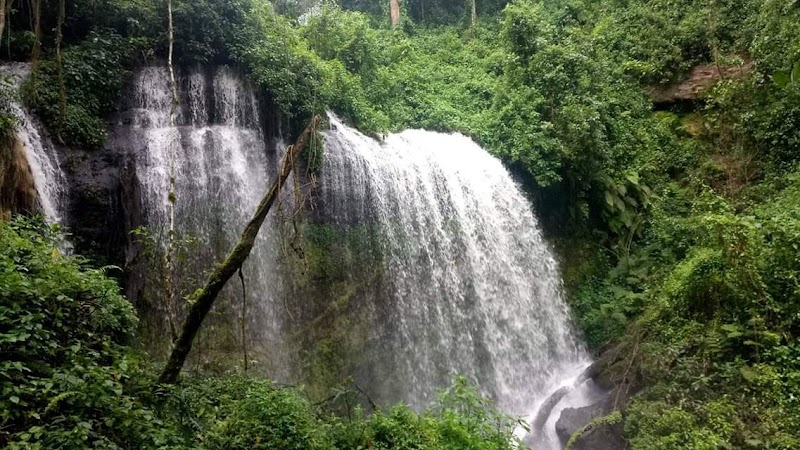
Luhya cultural festivals in Kakamega offer visitors an immersive experience into Kenya’s vibrant traditions through music, dance, and community events. Discover practical tips to make the most of your visit while engaging respectfully with this proud cultural heritage.
Choose Comfortable Footwear
Festival grounds vary from dirt paths to grassy open fields; wear sturdy shoes that manage both dry and damp conditions without sacrificing comfort.
Stay Hydrated Throughout the Day
Festivals can last several hours under the sun, so bringing water or purchasing drinks on site helps maintain energy and focus on the performances.
Respect Photography Etiquette
Always ask before photographing performers or locals, especially elders and sacred ceremonies, to honor privacy and cultural sensitivities.
Plan for Weather Variability
Bring a light rain jacket or umbrella during wetter months (March-May, October-November) to comfortably enjoy the event despite sudden showers.
Experience the Vibrant Pulse of Luhya Cultural Festivals in Kakamega, Kenya
Kakamega County, located in western Kenya, comes alive several times a year as the local Luhya community gathers to celebrate their rich cultural heritage through vibrant festivals. These events are more than just gatherings; they are immersive experiences where tradition, music, dance, and storytelling fiercely assert their place in modern life. Attending these festivals is an adventure grounded in cultural discovery, giving visitors practical insights into Luhya customs and community life.
The most prominent festival is the "Maragoli Cultural Festival," usually held annually in November or December. This event invites visitors to witness traditional dances like Isukuti, a fast-paced drum-driven dance that commands attention, and hear folk songs echoing ancestral stories. The festival site is often set in open fields or communal centers where the rhythms of drums and the energy of dancers invite everyone to join the celebration.
Navigating the festival terrain is straightforward: expect mostly flat, open grounds with occasional patches of grass and dirt. Footwear should be sturdy but flexible to handle mixed surfaces that might become muddy during rains. Festivals often start in the late morning and stretch well into evening hours, so come prepared with hydration and sun protection. Vendors offer traditional Luhya dishes such as 'ugali' and 'nyama choma' (roasted meat), giving a practical introduction to local cuisine.
For those looking to extend their cultural adventure, Kakamega Forest, just a short drive from festival sites, offers a hiking opportunity with a mix of moderate trails through the only tropical rainforest in Kenya. Expect about 8-10 km on well-marked paths under a canopy that seems to breathe alongside you. The forest’s bird life and butterflies nearly challenge hikers to keep still and observe.
Timing your visit is key. Festivals often coincide with harvest seasons, enhancing the communal spirit as locals give thanks. The dry months from July to October provide the best conditions to travel, avoiding muddy paths and unpredictable weather during the long rains.
Furthermore, engaging with locals offers practical insights: many elders are enthusiastic about sharing the historical context of traditional artifacts, marriage customs, and rites of passage. These stories reinforce the importance of preserving cultural identity amid global change. Visitors should respect community spaces, ask permission before taking photos, and support local artisans by purchasing handmade crafts.
The energetic pulse of the Luhya festivals in Kakamega provides a real-world lesson in the power of culture and nature coexisting. It’s more than watching traditional dances; it’s about stepping into an ongoing story, guided by beats that invite you to become part of the narrative.
Prepare well, arrive with respect, and open yourself to discover a fiercely proud people and the festivals that carry their heritage forward.
Nearby Trips
All Adventures
Boat Charters
Water Activities
Adventures near Kakamega, Kenya
Discover the unique and memorable adventures that make Kakamega, Kenya special.
Frequently Asked Questions
When are the main Luhya cultural festivals held in Kakamega?
Most major Luhya festivals, such as the Maragoli Festival, are held annually around November or early December, coinciding with the post-harvest season.
Are the festivals family-friendly and suitable for children?
Yes, these festivals are generally welcoming to families, with many activities engaging children, including traditional games and dances designed for all ages.
What local wildlife might I encounter near the festival areas?
Around Kakamega Forest nearby, expect to see various birds like the African green broadbill and blue-headed bee-eater, along with butterflies that add vibrant color to the surroundings.
Can I purchase traditional crafts at the festivals?
Absolutely. Local artisans often sell handmade items like beadwork, baskets, and carved wood souvenirs, offering meaningful ways to support the community.
Are there any cultural considerations I should be aware of?
Respect for elders and asking permission before photographing people or ceremonies is crucial. Also, adhering to designated areas and following festival rules maintains cultural integrity.
What’s the best way to get to Kakamega for the festivals?
Kakamega town is well connected by road from Nairobi and other cities. Public minibuses and private taxis can take you to festival sites, which are usually a short drive from the town center.
Recommended Gear
Comfortable Hiking Shoes
Supports long hours on varied terrain both at festival sites and surrounding natural areas.
Reusable Water Bottle
Staying hydrated helps sustain energy during extended exposure to sun and activity.
Light Rain Jacket
Useful for unpredictable showers, especially during festival times in the rainy season.
Sun Hat or Cap
Provides protection from the intense sun typical during dry months.
Local Insights
Hidden Gems
- "Isukuti drummaking workshops where visitors can learn crafting techniques"
- "Luhya folklore storytelling corners hosted by local elders"
Wildlife
- "Varieties of forest birds near Kakamega such as hornbills and turacos"
- "Butterflies in Kakamega Forest that flutter close enough to almost touch"
History
"The Luhya community comprises several subtribes with traditions preserved through oral history and festivals dating back centuries, reflecting a legacy of resilience and unity."
